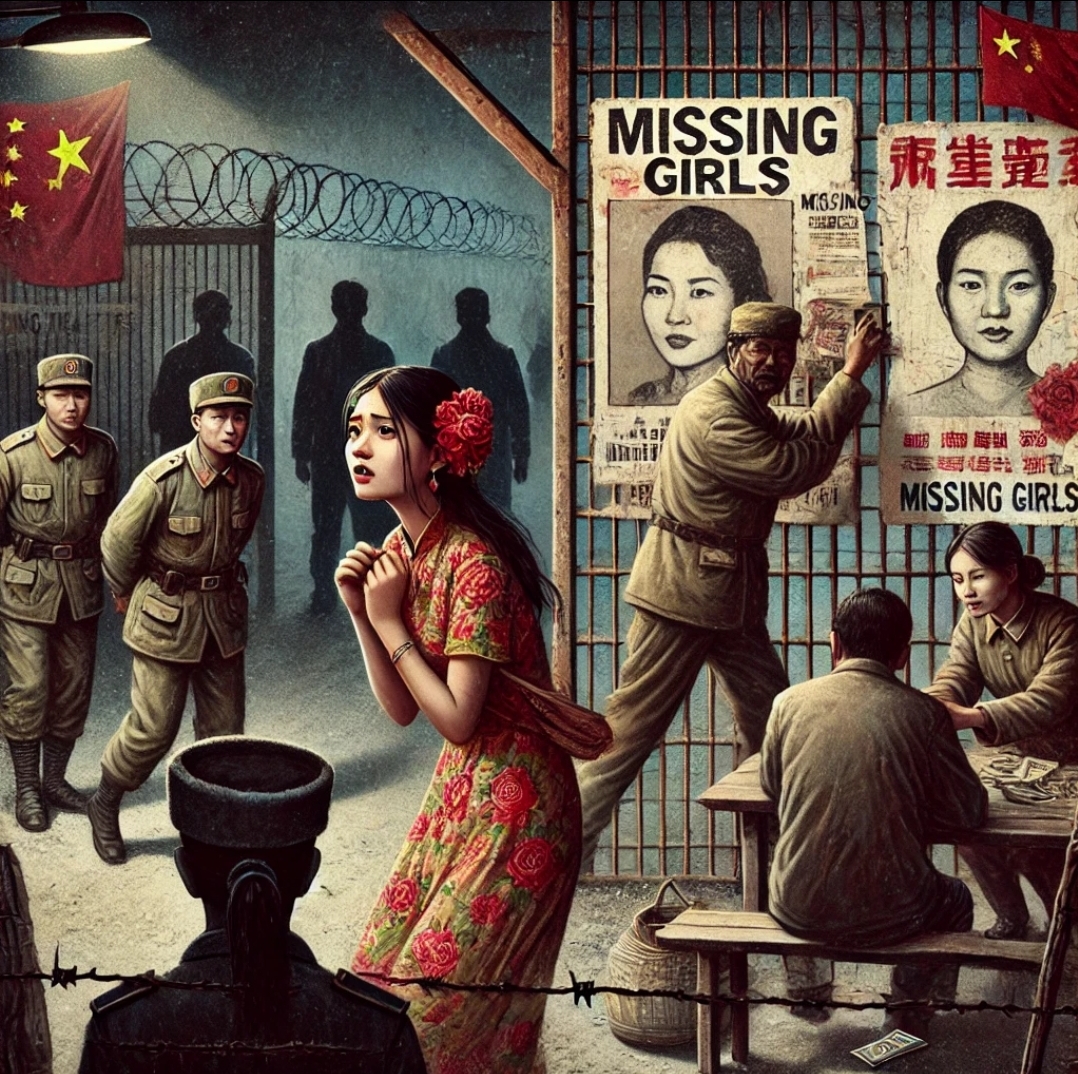CCP’s control of private lives of citizens spawns bride trafficking in China

Under the iron-clad rule of the Chinese Communist Party, the private lives of Chinese people are not so private. The state dictates citizens in numerous ways how to run their private lives.
Some of these restrictions have enjoyed a degree of public support too, like limiting minors to three hours of video gaming in a week; as this curbs the gaming habits of children. Some of them are outright ridiculous, like a ban on effeminate male celebrities in entertainment shows.
One has, however, spelled disaster; not only in the family lives of the ordinary Chinese citizens but also among communities in less developed countries which are neighbours of China. This was the one-child policy enforced strictly in China from 1979 to 2015.
The one-child policy thrust by the Chinese Communist Party on the people of China has resulted in a shrinking population. Together with the social phenomenon of a marked preference of male children in China, this has resulted in an imbalance in the male-female ratio and a consequent shortage of brides. Human traffickers are now smuggling into China girls from less affluent countries in South Asia so Chinese men can marry them forcibly and have babies. Chinese authorities are turning a blind eye to this human trafficking.
In 2024, for the third year in a row, the total population in China fell, despite the relaxation in the one-child policy. Since 2016, Chinese couples are being allowed to have two children and since 2021 three. The total number of people in China dropped by 1.39 million to 1.408 billion in 2024, compared to 1.409 billion in 2023, a Reuters report has said quoting the National Bureau of Statistics of China.
In Chinese society, there is a marked preference for the male child; rooted in the patriarchal tradition of the country. In the days of one-child policy, this had a disastrous consequence for the sex ratio. Families often resorted to sex-selective abortions and abandoned the female infants to ensure that they could have a son. In 2024, there were 30 million more men in China than women; 719 million men as against 689 million women. In 2023, the sex ratio in China in the age group of 0 to 4 years was around 109 males to 100 females.
The gender imbalance and shortage of brides in China has spawned the murky practice of trafficking of women from less affluent south Asian countries to China so Chinese men can have a child. Myanmar, Vietnam and Cambodia have been the main targets of Chinese traffickers for the past two decades but now there are reports of trafficking of women to China from Nepal and Pakistan too. According to a Human Rights Watch report, women belonging to ethnic groups in Myanmar who live in areas close to the China border are the most vulnerable to be trafficked to China.
Because of the war between the Burmese army and armies of different ethnic communities, in areas in Myanmar which border China hundreds of thousands of displaced people live in camps. With the men taking part in the conflict, the women are the sole breadwinners of these families. In camps they face acute financial desperation. The camps are close to the China border which is easy to cross without a passport. Employers in China are willing to hire people from Myanmar and this is fertile ground for traffickers who lure these girls with offers for a job in a farm or a restaurant in China and then sell them to a Chinese family.
Girls are also taken from poor families in Cambodia and Vietnam to China where they go in search of relative affluence and a better life. Some women are happy in their marriages while some are exposed to violence, sexual abuse and forced labour, says a study by Migration Policy Institute, an American think-tank.
It has been estimated that between 2017 and 2019 more than 21,000 women from Myanmar were sold to men in China, with over 18,300 forced to bear children. In this period more than 3,000 Vietnamese women and children were trafficked to China. According to an Al Jazeera report, 629 Pakistani women were sold as brides to Chinese men between 2017 and 2019. There has been a surge in the number of women and girls travelling from Cambodia to China since the end of the pandemic.
Kathmandu Post has reported, quoting the Anti Human Trafficking Bureau of Nepal Police, of “trafficking Nepali women to China by luring them into marrying Chinese men. When the women get to China, they are sold to other Chinese men in a practice known as ‘bride buying.’”
According to the U.S. State Department, the Chinese government does not provide figures for the number of women abducted for forced marriage, but publicized recovering 683 abducted women and children in 2023; saying some of them might have been exploited in trafficking. But a much publicized case which the BBC reported in April 2023 of a woman from the Yunnan province found in her home with an iron chain around her neck in a village in the Jiangsu province near Shanghai is evidence that women from impoverished areas in southwest China are also forced into marriages with single men in more affluent regions of the country to have children. She was forced to have a total of eight children.
Forced marriages of victims of human trafficking are legally banned in China, but according to reports Chinese authorities often turn a blind eye to the abominable practice. Chinese authorities were reported to have dismissed pleas by trafficked women, detained them for months on end, repatriated them without their children and also returned them to their husbands in exchange for bribes. Human Rights Watch mentions a case where the Chinese police demanded $800 as bribe from the family the woman had escaped from and then handed her back to them. They take little action against traffickers and often treat the women and girls as violators of immigration law.
The reason for this approach of the authorities is not difficult to fathom. Mandarins of the Chinese Communist Party are now concerned that the shrinking population means the number of workers and consumers will decline and the Chinese economy will struggle. The population decline in China is expected to accelerate in the coming years. The root cause of this malady is the control imposed by the authorities on family size, a glaring instance of state control of private lives of citizens in China.




![From Kathmandu to the World: How Excel Students Are Winning Big [Admission Open]](https://nepalaaja.com/img/70194/medium/excel-college-info-eng-nep-2342.jpg)
